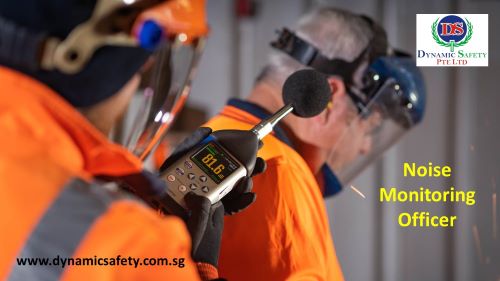



Blog
Noise Monitoring Officer

It is the responsibility of the Noise Monitoring Officer to assist the occupier of the workplace in all aspects, from performing the noise monitoring in their premises through the submission of the noise monitoring report to the Ministry of Manpower.
Noise measurement is a legal requirement
It is the responsibility of the occupier of the workplace (factory license holder) to measure the noise level generated by their workplace (either by the machinery or equipment that they use in their workplace, as well as any processes, operations or work conducted there) and submit it to the Ministry of Manpower through an online system.
Noise measurement frequency
Monitoring of noise occurs on a regular basis
1. Every three years at least
2. If there are any changes to the layout of machinery, the size or position of equipment, processes, or operations
3. In either case, the occupier must comply as soon as the Commissioner (MOM) instructs them to (whichever comes first).
Exposure to high noise levels is defined as:
When a person does not wear a hearing protector, he or she is considered to be exposed to high noise (in accordance with the Workplace Safety and Health (Noise) regulations 2011).
The Workplace Safety and Health (Noise) regulations 2011, PART IV, THE SCHEDULE - PERMISSIBLE EXPOSURE LIMITS FOR NOISE, specify the permissible exposure limit for noise, which is exceeded when the sound pressure level exceeds 85 dB(A) for an 8-hour workday. The peak sound pressure level exceeds 140 dB(C).
knowledgeable staff to measure noise levels
Competent persons are required to measure the noise level. The following competencies are needed to be a noise monitoring officer in Singapore:
1. will succeed in the course for Noise Monitoring Officer
2. Must be able to record the readings from the sound level meter and operate/calibrate it.
3. Using a type 1 sound level meter that has been calibrated
Why is noise monitoring done?
In addition to being mandated by law, noise monitoring serves the following purposes:
1. Determine the machine or process causing the noise.
2. Determine the noise levels.
3. Determine the number of workers who are exposed to loud noises.
4. Check the efficiency of the controls put in place to lower the noise level.
5. Identify the areas where it is appropriate to wear hearing protection.
The Workplace Safety and Health (Noise) Regulations, 2011 and the Workplace Safety and Health Guidelines (Hearing Conservation) Program Rev. 2014 govern how our noise monitoring officers must carry out their duties.

